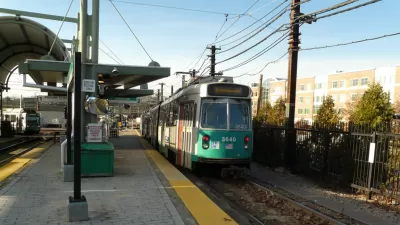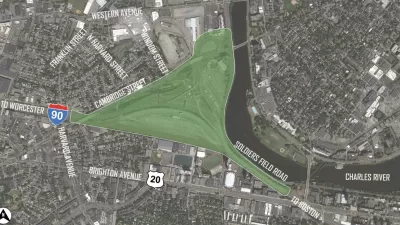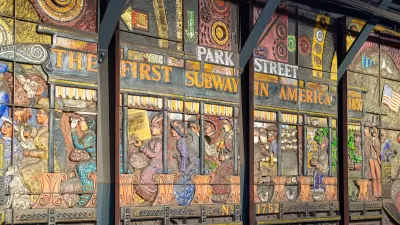This week, the Massachusetts Department of Transportation (MassDOT) announced how it aims to spend $12.4 billion on road and transit projects over the next five years. Expansions of Boston's Fairmount Indigo Line and Green Line are planned.

"On Thursday afternoon, MassDOT released its Capital Investment Plan for 2014 through 2018, which is an outline of how state officials plan to spend money, trying to fix the problems that plague pedestrians, cyclists, commuters, and drivers," reports Steve Annear. Though many of the projects outlined in the plan have been in the works for years, one bold initiative highlighted by Annear is the expansion of the 9.2-mile Fairmount Indigo Line.
Though the line passes through some of the densest areas of Boston, it has the lowest ridership of any commuter rail service in the city. In addition to new stations along the line that are currently under construction, the Capital Plan envisions an ambitious expansion of the Indigo Line. "According to a map produced by MassDOT as part of the report, the Indigo Line would expand in the next decade and make loops into Fort Point, near the Convention Center, as well as provide trips to Back Bay, and introduce a connector that could swing into Cambridge before making its way to North Station from Allston," explains Annear.
Though 53 percent of the $12.4 billion would be spent on highways, officials are planning to spend $130 million on improving bicycle infrastructure by 2018.
Of note, adds Martine Powers in the Boston Globe, "If efforts are successful to repeal the automatic gasoline tax hikes in a November ballot question, the resulting lower tax revenue could derail some of the transportation projects."
FULL STORY: Take A Ride On The MBTA’s ‘New Indigo Line’ In 2024

Study: Maui’s Plan to Convert Vacation Rentals to Long-Term Housing Could Cause Nearly $1 Billion Economic Loss
The plan would reduce visitor accommodation by 25,% resulting in 1,900 jobs lost.

North Texas Transit Leaders Tout Benefits of TOD for Growing Region
At a summit focused on transit-oriented development, policymakers discussed how North Texas’ expanded light rail system can serve as a tool for economic growth.

Why Should We Subsidize Public Transportation?
Many public transit agencies face financial stress due to rising costs, declining fare revenue, and declining subsidies. Transit advocates must provide a strong business case for increasing public transit funding.

How to Make US Trains Faster
Changes to boarding platforms and a switch to electric trains could improve U.S. passenger rail service without the added cost of high-speed rail.

Columbia’s Revitalized ‘Loop’ Is a Hub for Local Entrepreneurs
A focus on small businesses is helping a commercial corridor in Columbia, Missouri thrive.

Invasive Insect Threatens Minnesota’s Ash Forests
The Emerald Ash Borer is a rapidly spreading invasive pest threatening Minnesota’s ash trees, and homeowners are encouraged to plant diverse replacement species, avoid moving ash firewood, and monitor for signs of infestation.
Urban Design for Planners 1: Software Tools
This six-course series explores essential urban design concepts using open source software and equips planners with the tools they need to participate fully in the urban design process.
Planning for Universal Design
Learn the tools for implementing Universal Design in planning regulations.
Ascent Environmental
Borough of Carlisle
Institute for Housing and Urban Development Studies (IHS)
City of Grandview
Harvard GSD Executive Education
Toledo-Lucas County Plan Commissions
Salt Lake City
NYU Wagner Graduate School of Public Service




























